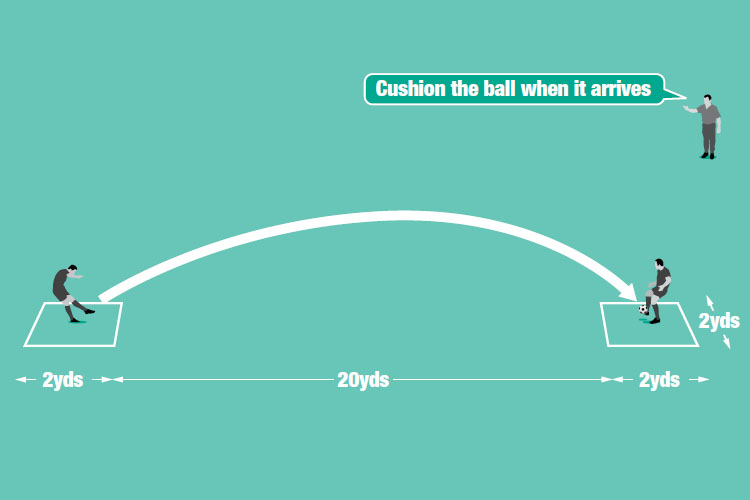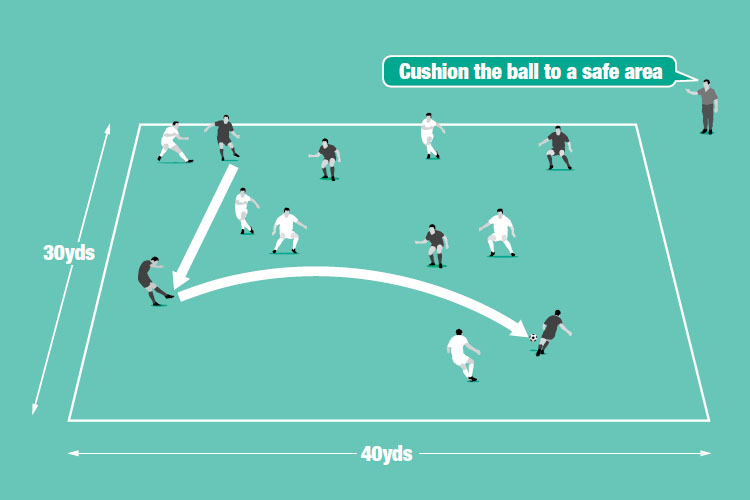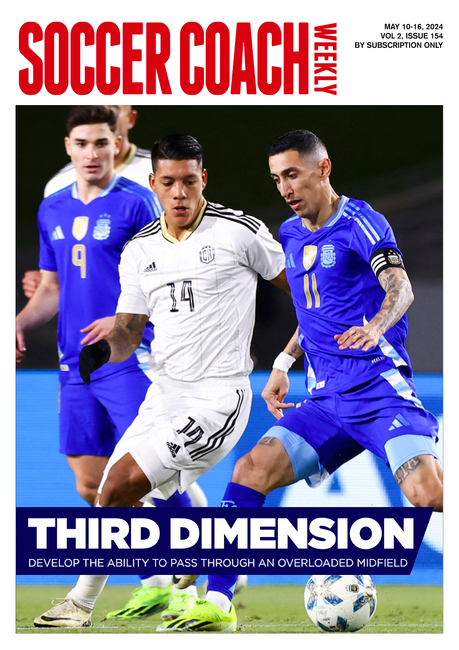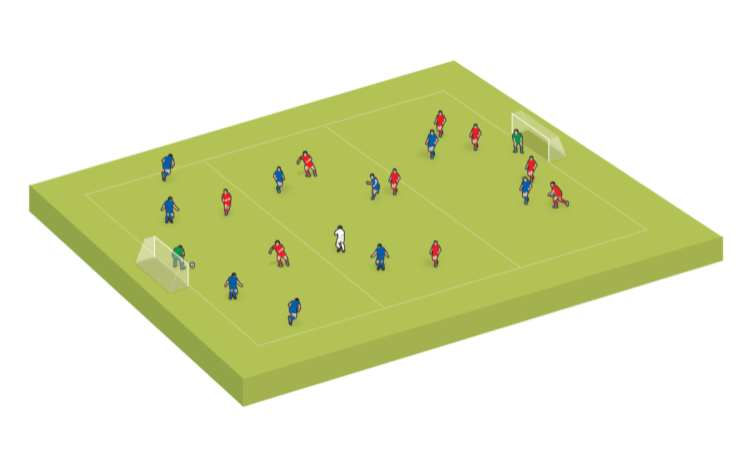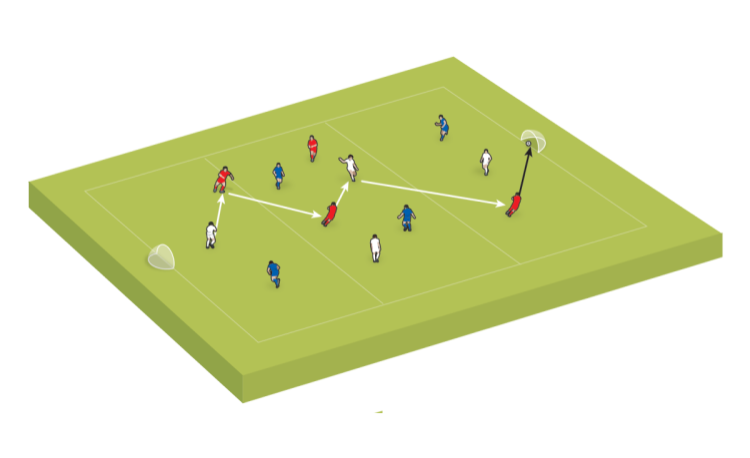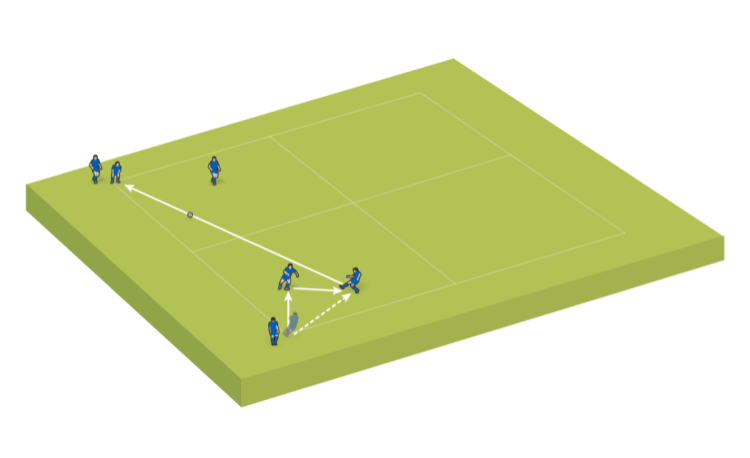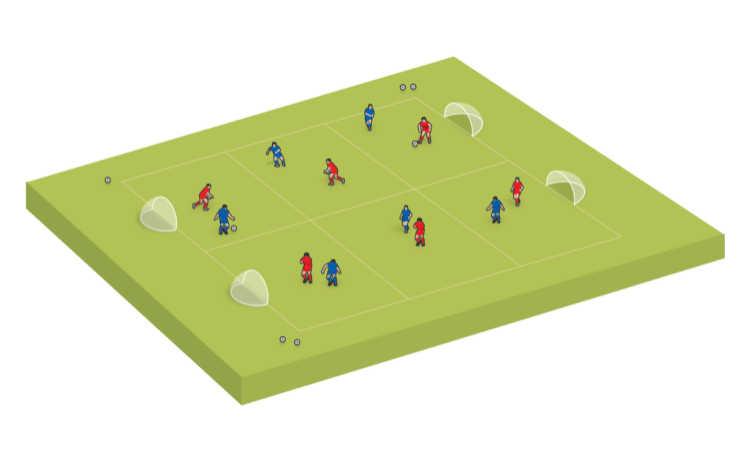Control the long pass
In the previous Smart Sessions Core Skills, we looked at long passing. Today, we show you how to teach your players how to bring those long passes under control.
What this session is about
- Bringing the ball under instant control, giving time to perform the next skill efficiently. “Cushion” control.
- Improving touch.
What to think about
When trying to control a ball arriving in the air, players need to:
- Move into the ball’s line of flight.
- Raise the controlling foot towards the ball and maintain balance.
- Absorb the pace of the ball by using a “soft” touch – withdrawing the foot on impact and keeping it relaxed. “Cushion” the ball with the laces (lofted) or side of the foot (driven).
- Drop the ball right in front of themselves, ready to perform the next skill.
Set-up
| Warm up | Session | Development | Game Situation | Warm Down |
|---|---|---|---|---|
| 10 minutes | 10 minutes | 15 minutes | 15 minutes | 10 minutes |
What you get your players to do
Stand a pair of players 20 yards apart and mark a two-yard square at each end. Players take it in turns to hit driven passes to each other. The player receiving must control the ball, making sure it stays inside their square, with their first touch before hitting a driven pass back with their second touch.
Add a third player who stands between the other two. Now the players at each end hit lofted passes over the head of the third player. The player receiving controls the ball, plays a one-two along the ground with the middle player and takes another controlling touch before hitting a lofted pass back.
The middle player regularly rotates with end players. In both drills, stress the importance of the accuracy and weight of service.
Development
Mark out a 30-yard square and play 4v4 with an additional four “target” players – two for each team in diagonally opposite corners, as shown in the middle picture.
Each target player is restricted to a two-yard square. Teams score a point when they hit a lofted or driven pass to one of their target players, who controls it within the target zone and then passes to a team mate with their second touch.
No other player is allowed to enter these zones. After every pass to a target player, whether successfully controlled or not, the target player swaps roles with a team mate.
Related Files
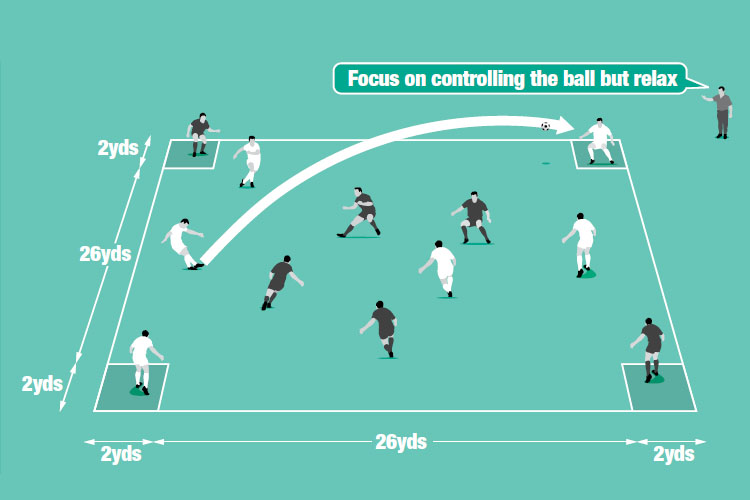
Game situation
Play 6v6 in an area with no goals (the playing area can be adjusted depending on age and ability).
Teams score two points for each successful control of a driven or lofted pass, and also score a point for completing five consecutive passes. The team with most points wins.
Newsletter Sign Up
Coaches Testimonials

Gerald Kearney, Downtown Las Vegas Soccer Club

Paul Butler, Florida, USA

Rick Shields, Springboro, USA

Tony Green, Pierrefonds Titans, Quebec, Canada
Subscribe Today
Discover the simple way to become a more effective, more successful soccer coach
In a recent survey 89% of subscribers said Soccer Coach Weekly makes them more confident, 91% said Soccer Coach Weekly makes them a more effective coach and 93% said Soccer Coach Weekly makes them more inspired.
*includes 3 coaching manuals
Get Weekly Inspiration
All the latest techniques and approaches
Soccer Coach Weekly offers proven and easy to use soccer drills, coaching sessions, practice plans, small-sided games, warm-ups, training tips and advice.
We've been at the cutting edge of soccer coaching since we launched in 2007, creating resources for the grassroots youth coach, following best practice from around the world and insights from the professional game.
